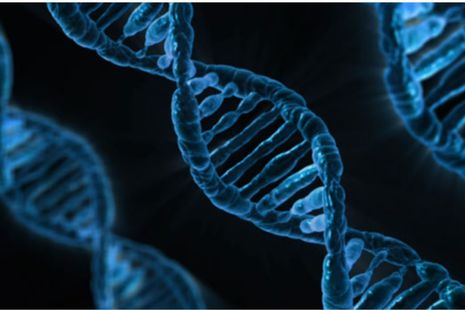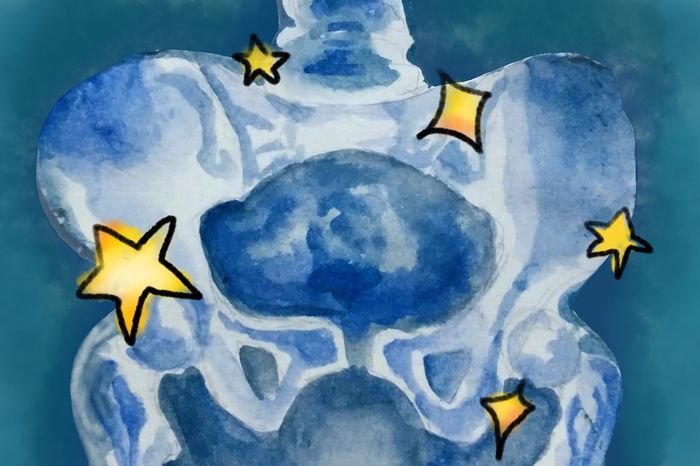Could gene therapy rewrite the future of Huntington’s?
Flora Allen explores the treatment offering new hope for a previously incurable disease

Huntington’s disease is a life-changing, neurodegenerative condition. The symptoms progress slowly over time, often developing around age 30-50, and fall into two groups: neurological problems, such as changes in mood and memory loss, as well as muscular issues, including muscle stiffness, known as chorea. There is a 50% chance that affected individuals will pass the faulty gene on to their children, and up until very recently, there was no cure for Huntington’s, with the disease generally proving fatal within two decades.
“Up until very recently, there was no cure for Huntington’s, with the disease generally proving fatal within two decades”
However, in late September 2025, scientists successfully treated Huntington’s for the first time in a ground-breaking study. The research team’s data showed an astounding 75% slowing in progression of symptoms in their phase I/II studies, with potential to increase patients’ lifespans by decades.
Huntington’s disease is caused by a mutation in the huntingtin gene, which contains the instructions for the huntingtin protein. This gene normally contains a section of three repeating DNA units (known as a trinucleotide repeat). However, in individuals with Huntington’s disease, the mutation results in the expansion of this trinucleotide repeat region, giving a toxic protein. This toxic protein attacks healthy neurons in the brain, resulting in a decrease in their number, and the onset of Huntington’s symptoms.
“These microRNAs work similarly to how a firewall blocks emails from being delivered when certain key words are present”
The gene therapy treatment involves a single dose of a drug called AMT-130, administered during brain surgery taking up to 18 hours. The drug is encapsulated within a virus to easily deliver the treatment to the patient’s brain cells. The virus has been deactivated (preventing it causing disease) and modified to contain a specific piece of DNA. When this DNA enters neurons, it is used to produce microRNAs (a small piece of genetic material) that recognise the mutant genetic material being produced from the huntingtin gene. These microRNAs work similarly to how a firewall blocks emails from being delivered when certain key words are present. In the case of the gene therapy, the microRNAs stop the mutant gene from sending instructions on how to build the protein. With the microRNAs silencing this pathway, there are lower levels of the toxic huntingtin protein produced in the brain, reducing the symptoms.
The trial, published by uniQure, involved 29 patients, split between high and low dose groups. It found that the rate of neuron death slowed significantly in the high dose group, shown through the lower levels of neurofilaments (a marker for neurodegeneration) in the liquid surrounding the brain and spine.
The treatment has cast hope across families harbouring the Huntington’s gene, especially for those young people that may know that they also carry the gene, but have not yet experienced symptom onset, which is known as stage zero Huntington’s. “There was every chance that we would never see a result like this”, said Professor Ed Wild, consultant neurologist at UCLH. “It’s very difficult to fully encapsulate the emotion.”
“The hope being that these young people will never have to experience Huntington’s symptoms”
The treatment did cause some short-term side effects, with headaches and confusion presenting in the patients, with the cause attributed to brain inflammation from the surgery. However, due to the renewal nature of brain cells, the therapy should last a lifetime as the patients’ reprogrammed neurons will remain viable.
It will take a lot of time and money to roll out this treatment across the world. UniQure aims to secure a US license in the first quarter of 2026, before focusing on the UK and the rest of Europe. The price of the surgery is likely to be high, with current gene therapy protocols costing millions – Libmeldy, another example of a gene therapy drug, is the most expensive drug offered on the NHS, costing £2.875 million.
Professor Tabrizi, director of the University College London Huntington’s Disease Centre, says this new gene therapy “is the beginning” and hopefully will lead to many new therapies for similar, supposedly incurable diseases.
Dr Wali Abi-Saab, chief medical officer at uniQure, is “incredibly excited” about the treatment results and looks forward to the treatment changing the lives of families. There is widespread elation across the community of 75,000 Huntington’s patients across the UK, US and Europe. The next stage of trials has been rolled out in stage zero Huntington’s patients, with the hope being that these young people will never have to experience Huntington’s symptoms.
 News / Cambridge students accused of ‘gleeful’ racist hate crime4 December 2025
News / Cambridge students accused of ‘gleeful’ racist hate crime4 December 2025 News / Churchill announces June Event in place of May Ball3 December 2025
News / Churchill announces June Event in place of May Ball3 December 2025 News / Cambridge cosies up to Reform UK30 November 2025
News / Cambridge cosies up to Reform UK30 November 2025 Comment / Don’t get lost in the Bermuda Triangle of job hunting 24 November 2025
Comment / Don’t get lost in the Bermuda Triangle of job hunting 24 November 2025 News / Uni redundancy consultation ‘falls short of legal duties’, unions say6 December 2025
News / Uni redundancy consultation ‘falls short of legal duties’, unions say6 December 2025









